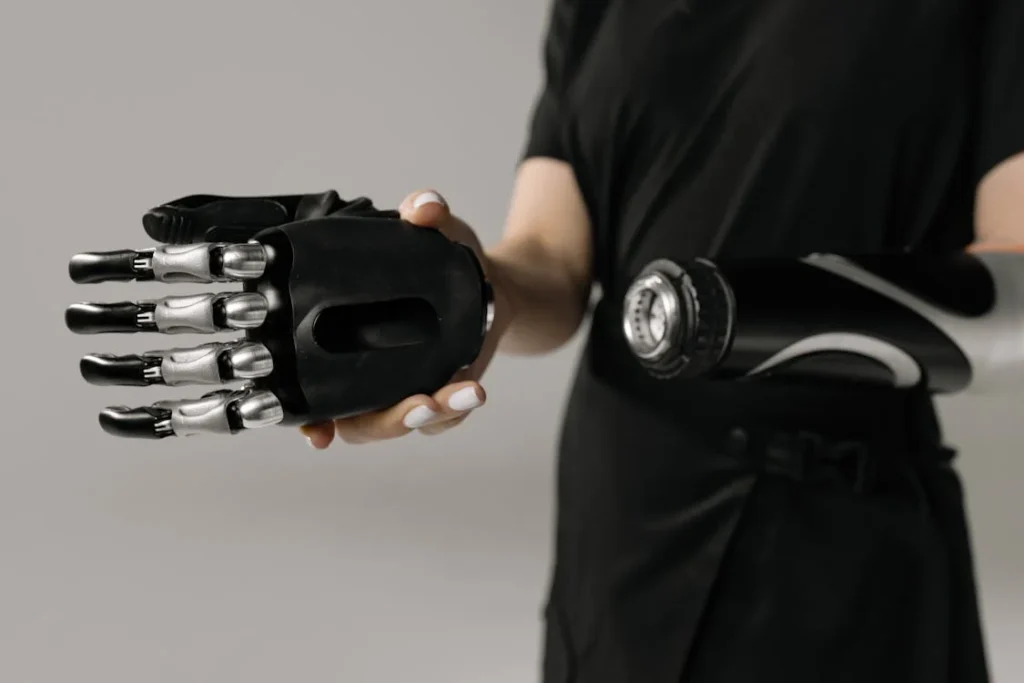Pain can be a powerful teacher. For people who’ve gone through surgery, trauma, or amputation, pain isn’t just something to “get over.” It becomes part of daily life—an unwelcome but constant reminder of what’s been lost or changed. But what if pain could be used differently? What if pain could become the beginning of healing instead of the end of comfort?
That’s exactly what reward-based healing explores. It’s a concept rooted in neuroscience, psychology, and rehabilitation medicine. And at Robobionics, we’ve seen first-hand how a shift in mindset—paired with the right tools—can turn pain into a stepping stone for strength, movement, and independence.
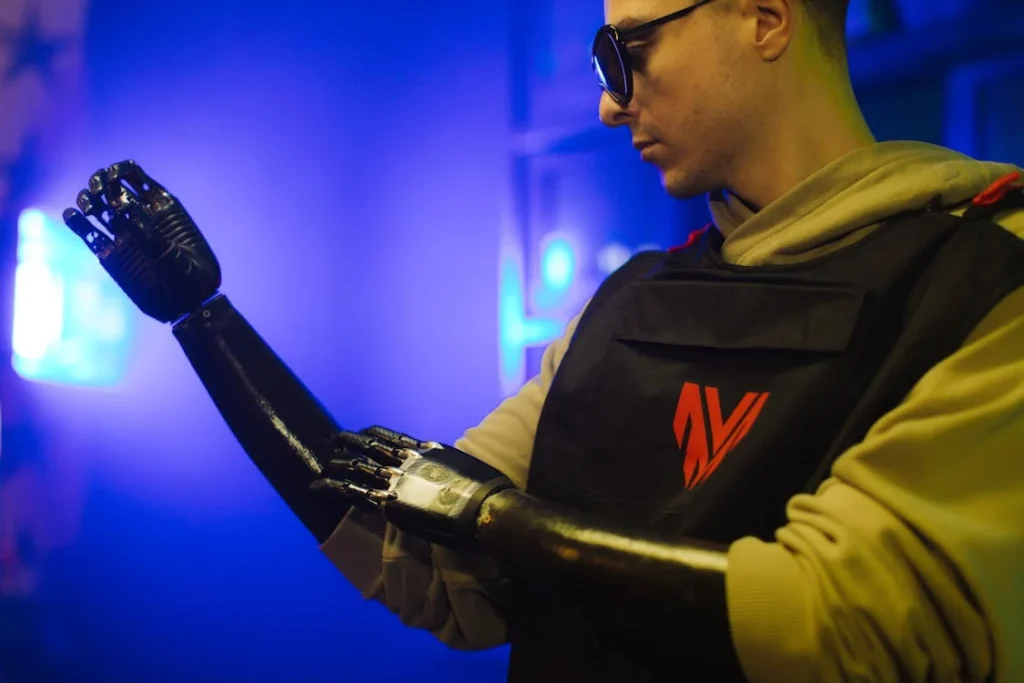
What Is Reward-Based Healing?
Understanding the Brain’s Reward System
At the heart of reward-based healing is the brain’s reward system. This system is built to respond to things that feel good—like eating a great meal, hearing a compliment, or finishing a task. When something gives us pleasure, the brain releases dopamine, a chemical that makes us feel good and motivates us to repeat the behavior.
This system was never designed just for joy. It’s there to help us survive and thrive. When we eat after being hungry, dopamine tells us, “That was the right move—do it again.” When we feel proud after doing physical therapy, the brain’s reward system is saying, “Nice work—keep going.”
But here’s where things get fascinating. Research now shows that the brain’s reward system can be deliberately activated to support healing, especially after injury or surgery. And it can work even when the body is in pain.
The Conflict Between Pain and Motivation
When we’re injured, our first instinct is to protect ourselves. Pain tells us to stop moving, avoid strain, and rest. That’s useful during the early stages of healing—but it becomes a problem later.
Especially for amputees or people recovering from surgeries, too much avoidance can cause muscle weakness, stiffness, slower healing, and even chronic pain. This is where traditional recovery methods fall short—they assume people will just “push through.” But that doesn’t always happen.
Instead, people often get stuck in a cycle:
- Pain shows up
- Movement feels risky
- Fear kicks in
- Motivation disappears
Reward-based healing offers a better route. It doesn’t ignore pain. Instead, it creates positive reinforcement loops that give the brain something it craves: progress, reward, and feedback.
When someone uses their prosthesis and receives encouragement, feedback, or even just a sense of accomplishment, that can override the fear signals. It gives the brain a reason to continue, even if the task is difficult.
The Role of Small Wins
One of the most powerful ways to activate the brain’s reward system is through small wins. These are small but meaningful achievements that mark progress.
In prosthetic rehabilitation, this could be:
- Putting on the prosthesis faster than yesterday
- Walking five more steps than last week
- Balancing for a full minute without support
These wins may seem minor on the surface, but they tell the brain: “You did something right. Let’s do more of it.” That’s dopamine at work. And when this happens regularly, it creates a positive cycle of motivation.
People begin to look forward to therapy. They feel emotionally uplifted after using their limb. And most importantly, they begin to associate movement with reward, not pain.
Why This Approach Is a Game-Changer
For prosthetic users, this approach changes everything.
Instead of seeing therapy as something painful and draining, they begin to see it as rewarding and meaningful. Instead of focusing on what they’ve lost, they start noticing what they’re gaining—mobility, independence, confidence.
It also addresses one of the most common emotional hurdles: learned helplessness. This happens when someone tries something, struggles, and eventually gives up. But with reward-based healing, the focus shifts. Failure isn’t the end. Every effort becomes data. Every step—no matter how small—is counted as progress.
We’ve seen this first-hand at Robobionics. Clients who were once hesitant to use their prosthetic limbs became more engaged, more confident, and more independent—not because they were forced to push through pain, but because they were taught to celebrate effort and reward themselves for showing up.
This approach doesn’t require expensive equipment or extra time. What it needs is a shift in how we measure progress. It requires family members, prosthetists, and users themselves to recognize the value of the journey, not just the end goal.

Applying Reward-Based Healing to Prosthetic Recovery
Why Prosthetic Users Need More Than Physical Support
Healing after limb loss is more than physical. There’s a deep emotional shift that happens when someone wakes up to a different body, a different sense of self, and a future filled with unknowns.
People often describe feeling overwhelmed, unsure of what comes next, and afraid they might not feel whole again. This is where traditional therapy models fall short—they focus mainly on physical tasks like standing, walking, or balancing, without fully addressing the emotional journey that comes with it.
Reward-based healing steps in to fill this gap. It gives prosthetic users something to hold onto emotionally and psychologically. It’s not just about whether they walked today—it’s about how they felt doing it.
Was there a moment of pride? Did someone notice their effort? Did they see themselves making progress? These moments can turn a difficult experience into one that is meaningful and even motivating.
When pain is no longer seen as the enemy—but rather a signal that something worthwhile is being attempted—the entire experience of rehabilitation changes. It’s not just tolerable. It becomes empowering.
The Emotional Drivers That Accelerate Progress
The human brain is wired for emotional reward. That’s why a smile, a kind word, or a pat on the back can mean more than an hour of technical progress. When someone uses a prosthesis for the first time, it can feel awkward or frustrating. But if that moment is met with encouragement or celebration, it becomes a powerful memory. The brain links the effort with positive feelings, and it becomes easier to try again tomorrow.
This is especially true in early stages of prosthetic use, when users are often battling fatigue, self-doubt, and discomfort. If the only feedback they get is correction or criticism—“You’re doing it wrong,” or “That’s not good enough”—they’re likely to give up or hesitate.
But if they hear, “That was a great effort,” or “You’ve improved since last time,” it activates the brain’s reward circuit. Suddenly, trying becomes something that feels good, not just something that must be endured.
The emotional reward can come from many places. It could be a physical therapist who genuinely celebrates progress. It could be a mirror that shows how upright someone stood today. It could be a small internal moment where the user feels proud of their persistence. These emotional sparks add fuel to the fire of recovery, making it not only sustainable but something people actively want to do.
Designing Prosthetics That Support the Brain
At Robobionics, we don’t just build prosthetic limbs. We build tools that support the brain’s natural learning and reward systems. That means every product we create is designed with the user experience in mind—not just how it fits or moves, but how it feels to wear, learn, and grow with.
For example, our advanced sensors and intuitive grip technology aren’t just about performance. They’re about feedback. When a user can easily pick up a bottle or turn a doorknob, it creates a moment of success. That success isn’t just functional—it’s emotional. It gives users confidence, which the brain registers as a reward. And that keeps them coming back.
We’ve also focused heavily on ease of use. If a prosthesis is difficult to operate or uncomfortable, it can drain motivation. Every delay, every struggle, every confusing button becomes a small negative experience. Too many of these and the brain starts to say, “Why bother?” That’s why we simplify wherever we can—streamlining functions, improving comfort, and reducing the time it takes to get up and go.
But it’s not only about the devices. It’s also about the guidance we provide. Our prosthetists are trained not only to fit limbs, but to coach users through the emotional process.
They know how to spot moments where motivation is dropping, and how to bring it back by focusing on small wins and meaningful encouragement. They know how to turn each fitting, adjustment, or follow-up into a moment that feels like forward momentum, even if it’s just a tiny step forward.
Case Reflections: Progress Through Perspective
One of our clients, a young woman who lost her lower leg in a motor accident, initially refused to engage with her prosthetic. It wasn’t that she couldn’t—it was that every attempt reminded her of what she’d lost. Therapy became a source of anxiety.
But our team worked with her using a reward-based healing approach. Every small improvement was recognized. We celebrated her for showing up, not just succeeding.
Over time, her outlook changed. She stopped measuring herself against her pre-accident body and started focusing on what she could now achieve.
The turning point wasn’t when she ran her first steps. It was when she smiled after standing on her own, knowing she had done it without help. That’s when the healing truly began.
In another case, a middle-aged man was struggling to adjust to his bionic arm. He was technically capable, but emotionally frustrated. He felt clumsy and embarrassed.
Our approach involved breaking down each task into smaller milestones—picking up a spoon, brushing his hair, signing his name. Each success came with feedback, praise, and tracking.
He could see how far he’d come. Within weeks, he wasn’t just using the arm—he was personalizing it, taking pride in it. That pride, once missing, became his fuel.
These are not exceptions. They are examples of what’s possible when the brain is part of the recovery plan, not just the muscles.
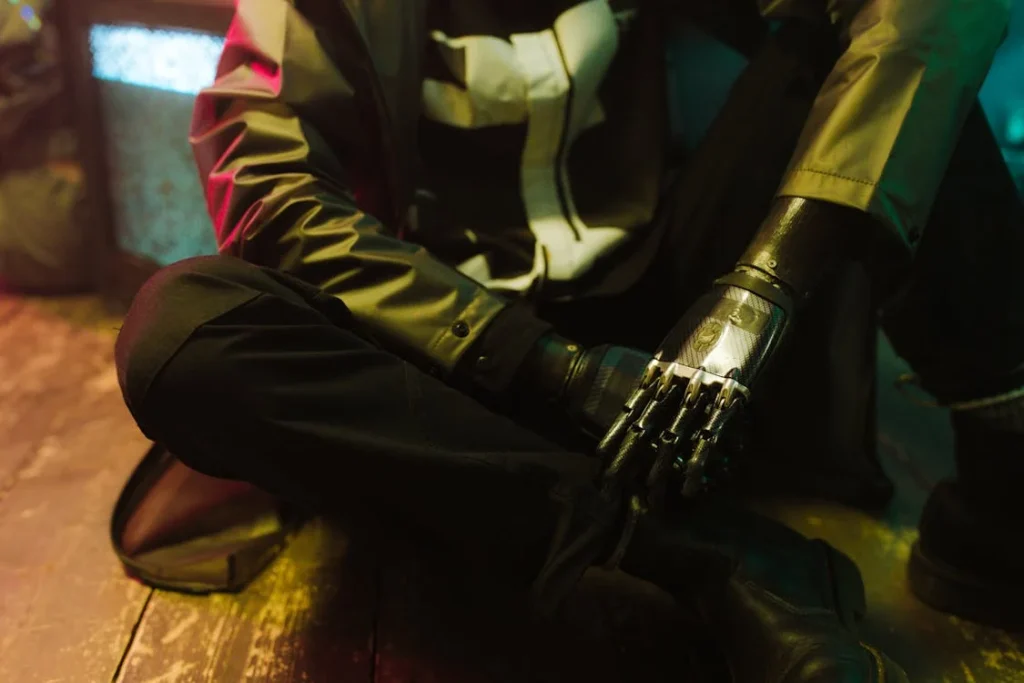
The Role of Family and Environment in Reward-Based Healing
Why Healing Doesn’t Happen in Isolation
When someone loses a limb or goes through a major surgery, the recovery journey doesn’t happen in a vacuum. It unfolds within the environment they live in—among family, friends, caregivers, and health professionals. Every interaction, every conversation, and every response becomes a signal to the brain. And these signals either support healing or delay it.
That’s why the support system around a prosthetic user plays such a powerful role in reward-based healing. The brain is constantly scanning for feedback. It listens closely to the tone of voice from a spouse, the look of encouragement from a child, or the sigh of frustration from a caregiver. All of this either strengthens or weakens the person’s motivation to continue trying.
The reward system in the brain isn’t just activated by internal success. It thrives on social feedback—on being noticed, praised, and included. A single sentence from a loved one—like “I’m proud of you”—can trigger the same dopamine release as a win during therapy. This isn’t just psychology. It’s biology.
If the environment around a recovering person is filled with tension, impatience, or pity, their brain begins to associate recovery with stress. But if the environment is warm, responsive, and focused on small moments of progress, the brain begins to rewire itself. That rewiring is where real healing begins.
Creating a Culture of Encouragement at Home
One of the most important things families can do is create a home where effort is celebrated, not just outcomes. This means paying close attention to how progress is acknowledged.
If a prosthetic user is trying to stand or walk but isn’t getting it quite right, it’s better to say “You’re doing better than yesterday” instead of “That’s still not quite right.” The brain listens carefully to those subtle cues. Encouragement doesn’t mean ignoring mistakes. It means noticing effort and keeping the focus on what’s improving.
This mindset also requires patience. Recovery takes time, and the road is rarely straight. Some days will feel like setbacks. Others will feel like breakthroughs. The goal is to let the user feel that both are okay—that they’re not being judged on perfection, but on persistence.
It also helps to avoid comparison. When someone says, “Your friend recovered faster,” or “Others can do this already,” the brain doesn’t hear motivation. It hears threat. It feels shame. That shuts down the reward system and activates fear. In contrast, saying something like, “Look how far you’ve come since last week,” creates a sense of personal victory. That’s what fuels long-term progress.
In homes where reward-based healing works best, you’ll often hear phrases like “I see how hard you’re trying,” or “That must have been tough, but you handled it well.” These statements do more than soothe—they actually guide the brain toward healing.
How to Make Everyday Tasks Part of Recovery
Another way families can support reward-based healing is by integrating small rehabilitation goals into daily life. This turns ordinary moments into opportunities for growth. For example, instead of setting aside a stressful block of “exercise time,” a user can be encouraged to help set the dinner table, water the plants, or walk to the mailbox. Each of these tasks can be celebrated as wins.
When these efforts are treated like progress—not chores—it activates that critical feeling of success. The brain starts to see everyday life as a space for improvement, not just survival. That sense of purpose is what helps many users recover not just physically, but emotionally.
Over time, this also helps rebuild identity. Many people who use prosthetics struggle with a shift in how they see themselves. They may no longer feel capable or useful. By re-engaging with daily routines and being part of the household’s rhythm, they begin to reclaim a sense of value. They’re not just healing—they’re contributing again.
Even small tasks can create big shifts in self-perception. Folding laundry. Holding a baby. Stirring a pot of tea. Each time they accomplish something they once thought impossible, the brain lights up. These moments build confidence, which builds motivation, which builds healing.
Caregiver Burnout and Emotional Support
While much of the focus is on the person recovering, it’s just as important to talk about the emotional needs of caregivers. Reward-based healing doesn’t only depend on motivation from the patient—it depends on consistent, positive support from the people around them. And that’s hard to give if you’re burned out.
Caregivers, whether they are spouses, parents, siblings, or professionals, often carry a heavy emotional load. They worry. They stretch themselves. They sometimes put their own needs aside to help someone else heal. But if they are exhausted, they may become short-tempered or disengaged—not because they don’t care, but because they’re human.
Supporting caregivers is therefore essential. They need space to rest, people to talk to, and encouragement for their efforts too. After all, they’re part of the healing ecosystem. If they feel seen and supported, they’re much more likely to stay engaged in a way that benefits the person in recovery.
Families should talk openly about how everyone is doing—not just the person with the prosthesis. Celebrating the wins of caregivers—no matter how small—can be a powerful way to keep the reward cycle alive for everyone involved.
Building a Healing-Friendly Environment
The physical environment also matters. A space that’s calm, clutter-free, and filled with light can reduce stress and promote healing. Simple changes like a comfortable chair for putting on a prosthesis, grab bars in key areas, or a mirror for posture training can make a big difference. But beyond design, what matters most is how the space feels. Is it welcoming? Is it supportive? Is it filled with moments of connection?
Healing thrives in environments that offer emotional warmth. A room where laughter happens. A kitchen where help is offered. A couch where someone can sit without judgment. These are the spaces where the brain can feel safe enough to grow.
At Robobionics, we often talk to families about designing not just for function, but for hope. Because when hope is built into the walls of a home, healing doesn’t feel like a duty. It feels like a journey worth taking.
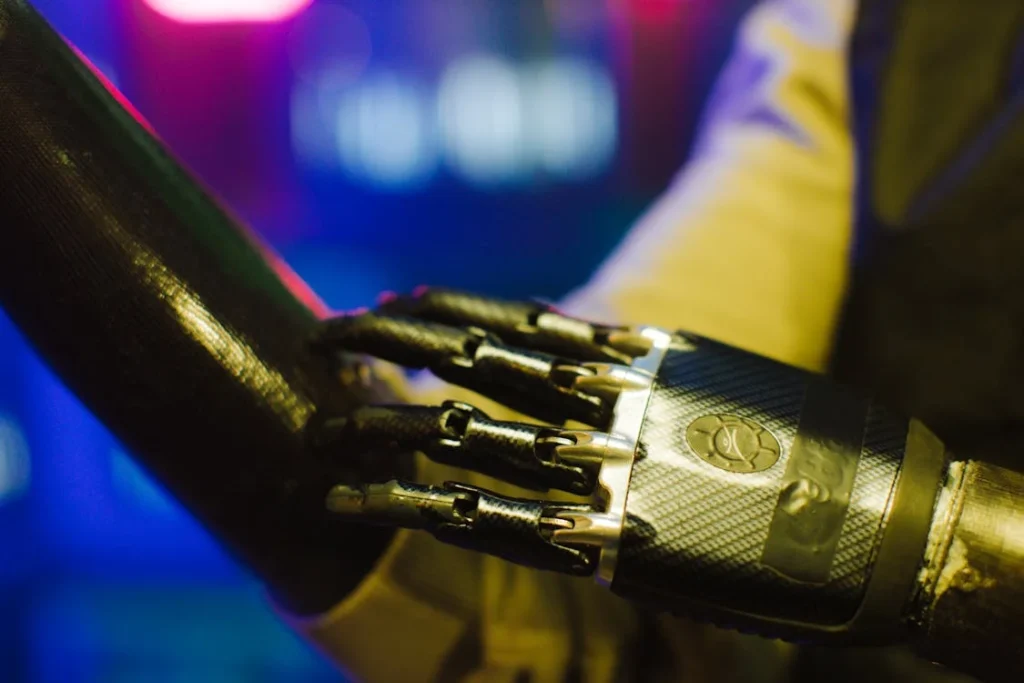
The Neuroscience Behind Reward-Based Recovery
How the Brain Learns Through Motivation
Healing isn’t just something the body does. It’s something the brain leads. From the moment an injury occurs or a limb is lost, the brain is constantly adapting. It’s rewiring its circuits, building new pathways, and deciding how to respond to every single stimulus—pain, pressure, balance, and even emotion.
For years, scientists believed that most of this brain activity was fixed, especially in adulthood. But newer research in neuroscience has completely flipped that idea on its head. The brain, it turns out, is highly plastic. That means it can change and adapt far more than we once thought, even after injury or trauma. This adaptability is known as neuroplasticity.
Neuroplasticity is the reason someone who loses a leg can learn to walk again with a prosthetic. It’s the reason someone with a bionic arm can eventually button a shirt or tie their shoelaces. But neuroplasticity doesn’t happen on its own. It needs fuel. And that fuel is repetition, emotion, and reward.
When someone repeats a movement—like standing or grasping—while feeling a sense of success, their brain creates new connections that make the action smoother and more natural over time. These connections strengthen every time the experience is tied to a positive emotion. That’s where reward-based healing becomes so powerful. It adds that emotional layer that accelerates learning and builds lasting change.
Dopamine: The Brain’s Chemical for Progress
Much of the reward system is driven by a neurotransmitter called dopamine. Dopamine is released when we anticipate or receive a reward. It gives us a sense of pleasure, motivation, and even excitement. But it does more than just make us feel good—it actually changes how we learn.
Studies have shown that dopamine doesn’t just show up when something pleasant happens. It spikes when we expect progress. That means the brain rewards not only the victory itself but also the journey toward it. In rehabilitation, this is incredibly useful. If someone feels they are getting better—even slightly—their dopamine levels rise, and their brain becomes more engaged and willing to try again.
In fact, this is one reason why setting clear, visible goals can be so effective in physical therapy. When users can track their own improvement, they don’t just get better physically—they feel better, which keeps them coming back. This creates a loop: effort leads to progress, progress leads to dopamine, and dopamine leads to more effort.
Without this loop, recovery can feel mechanical and empty. That’s why reward-based healing brings in emotion. It brings in feedback. It turns therapy from a chore into something that feels meaningful.
The Brain Doesn’t Differentiate Between Types of Rewards
Another fascinating insight from neuroscience is that the brain doesn’t always distinguish between big and small rewards. Whether it’s a major achievement like walking unassisted or a tiny victory like lifting a spoon, the brain responds the same way—as long as the experience feels significant to the person.
That means we don’t have to wait for huge milestones to activate the brain’s reward system. We can create those positive responses every single day, through encouragement, recognition, and small moments of progress.
This also explains why some people recover faster than others, even when they have similar physical conditions. It’s not just about strength or endurance—it’s about engagement. The more emotionally engaged the brain is in the recovery process, the faster and deeper the healing tends to be.
The science is clear: when people feel hopeful, when they feel seen, when they feel proud, they learn better and heal faster. And these feelings are not just nice extras—they’re critical ingredients in the recovery recipe.
What fMRI Studies Reveal About Healing Motivation
Functional MRI (fMRI) studies have opened up new ways of understanding how the brain operates during recovery. These scans show which parts of the brain are active during certain tasks, like using a prosthetic or responding to therapy.
One key discovery is that when people receive positive feedback after a difficult task, the areas of the brain related to learning and memory light up more intensely. That means the feedback isn’t just being felt emotionally—it’s being stored neurologically. The brain is literally learning how to heal, and the presence of a reward speeds up that learning.
Another finding is that people who approach recovery with a sense of agency—the feeling that they are in control of their healing—show more neural activity in the reward centers. That’s a crucial insight, especially for prosthetic users who may feel overwhelmed or passive early in the process. The more they’re invited to participate actively and to set their own goals, the more their brain becomes a partner in healing.
This is why we don’t just hand over a prosthetic and say, “Here’s what to do.” At Robobionics, we involve users in every step—from fitting to training to daily use—so they feel ownership. That ownership doesn’t just improve outcomes. It boosts reward response, emotional resilience, and long-term commitment.
Pain vs. Reward: A Battle in the Brain
Pain and reward often activate opposite systems in the brain. Pain triggers fear, caution, and withdrawal. Reward triggers excitement, curiosity, and action. When someone is recovering from trauma or using a new prosthesis, both systems are often firing at the same time. The body says, “Be careful,” while the mind says, “Try again.”
The goal of reward-based healing is not to eliminate pain—it’s to outweigh it with motivation. If the brain sees the reward as stronger than the pain, it will lean toward action. But if the pain dominates, progress stops.
This is where emotional context matters. Pain is easier to tolerate when we feel supported, when we believe it’s worth it, and when we see results. That’s why even short therapy sessions can be more effective if they’re emotionally uplifting. A joyful 15-minute session can do more for the brain than a stressful 45-minute one.
At Robobionics, we encourage users to listen to their bodies, but also to listen to their desire to grow. That desire, when supported and reinforced, can become more powerful than discomfort. It becomes the new driver.
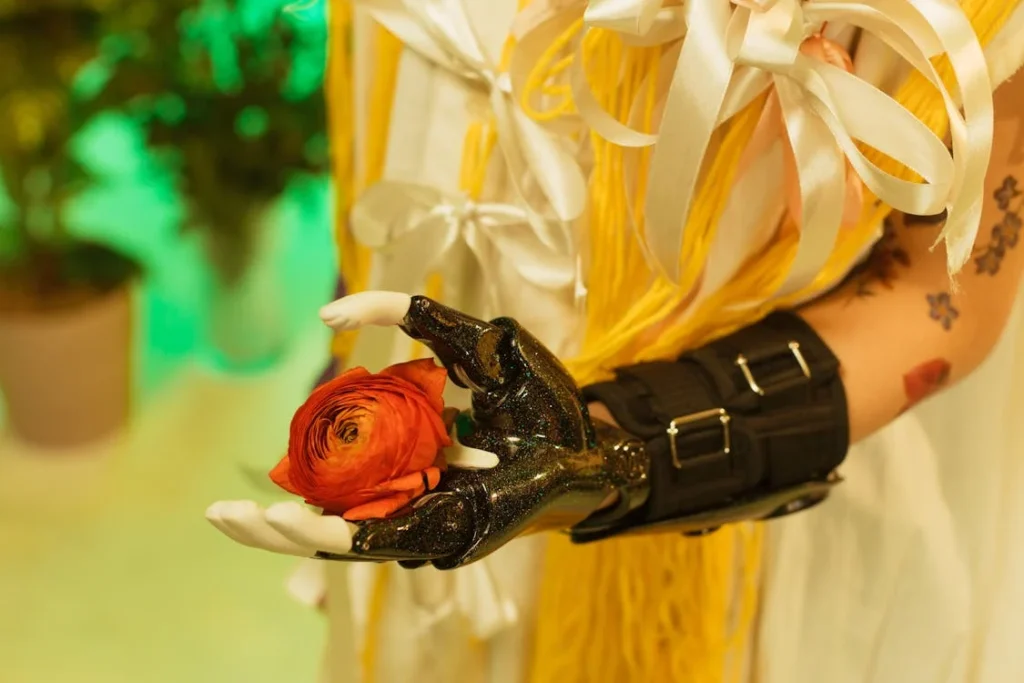
Culture, Mindset, and the Healing Narrative
How Cultural Beliefs Influence Recovery
Healing does not happen in a vacuum—it happens inside a story. And that story is often shaped by the culture we grow up in. In India, and many parts of Asia, healing is not seen as an individual journey.
It is a shared experience, one that involves not just the person recovering, but the entire family, the wider community, and often even spiritual beliefs. This cultural backdrop has deep influence over how pain is perceived, how progress is measured, and how people engage with their own bodies after trauma.
For instance, in many Indian families, there is a silent expectation to be “strong” in the face of adversity. Pain is seen as something to be endured quietly. There is deep respect for sacrifice and patience—but often not enough space for vulnerability or emotional expression.
While this can build resilience, it can also unintentionally block the reward system. If a person is praised only when they hide their pain, they may never feel comfortable expressing the joy of a small win. They might not feel “allowed” to celebrate effort if the cultural script tells them to “just carry on.”
That’s why reward-based healing must be adapted to the cultural lens through which a person views themselves. In India, where family honor and social appearance are important, someone using a prosthesis might worry about being seen as weak or incomplete. This fear can delay healing—not because the person lacks ability, but because the emotional safety to explore progress isn’t fully there.
Reward-based healing helps shift that narrative. It invites people to redefine what “strength” looks like. Strength is not just in hiding pain—it is in choosing growth despite pain. And progress is not a threat to dignity. It is an expression of resilience.
Rewriting the Story of the ‘Suffering Hero’
In many traditional stories, especially in Indian epics, heroes suffer silently. They endure trials without asking for help. While these stories inspire us, they can also create unhealthy standards. People may feel they’re only “worthy” if they suffer enough. This mindset can be damaging in a healing journey.
Reward-based healing offers a new story: one where the hero doesn’t suffer alone but grows through connection, feedback, and joy. In this version, asking for support is not weakness—it’s wisdom. Celebrating small progress is not pride—it’s power.
Rewriting this internal story changes how people see themselves. A man using a prosthetic hand is no longer “less than whole.” He is someone building a new kind of strength. A young girl learning to walk again after limb loss isn’t just recovering—she’s breaking limits, and her journey deserves recognition every step of the way.
The shift in narrative doesn’t erase pain. But it reframes it. Pain is no longer the price of being a survivor. It becomes the signal that something new is being built—something worth celebrating.
Community Recognition as a Form of Reward
In collectivist cultures, what the community says matters. How neighbors, friends, and extended family react to someone’s recovery can deeply affect their motivation. That’s why community-based recognition is a powerful form of reward in places like India.
When a person is seen using their prosthesis confidently in public—and is met not with pity, but with encouragement—it boosts self-esteem. It gives the brain the social signals it craves. This kind of feedback isn’t just helpful—it’s transformative.
Imagine a community where recovery is honored the same way achievements are. Where someone returning to work after an amputation is celebrated just like someone who graduates. Where prosthetic users are featured in local success stories, school events, or temple gatherings—not as people to feel sorry for, but as symbols of courage.
We’ve seen this happen. In small towns where our clients live, some have been invited to speak about their journey, to demonstrate how their prosthesis works, or to help others who are just starting out. These acts turn healing into leadership. They show that progress isn’t private. It’s contagious.
At Robobionics, we actively work to help create these spaces—whether by connecting users with peer groups, showcasing their stories, or partnering with local awareness programs. Because when society becomes a source of reward, not shame, healing becomes faster, deeper, and more joyful.
From Inner Dialogue to Inner Drive
Finally, one of the most powerful shifts happens within the user themselves. What do they say to themselves when they wake up in the morning? Do they see a person in recovery—or a person who is already rebuilding? Do they focus on what they can’t do—or on what they’re beginning to do better?
Reward-based healing works best when the inner voice becomes an ally, not an enemy. And in cultures where silence is common, that voice is sometimes the only one people hear. If it’s harsh, they shrink. But if it’s hopeful, they grow.
This is why part of the reward process must involve teaching people how to talk to themselves. Phrases like, “I’m getting stronger,” “Today is progress,” or “This discomfort is leading somewhere,” might sound simple—but they create a mental rhythm that rewires the emotional response to effort.
In the Indian context, this internal dialogue can also draw from spiritual strength. Many users find comfort in prayer, mantras, or rituals. These aren’t just cultural practices—they are neurological anchors. They ground the user in meaning, in purpose, in peace. And all of those things help the brain say, “Yes—keep going.”
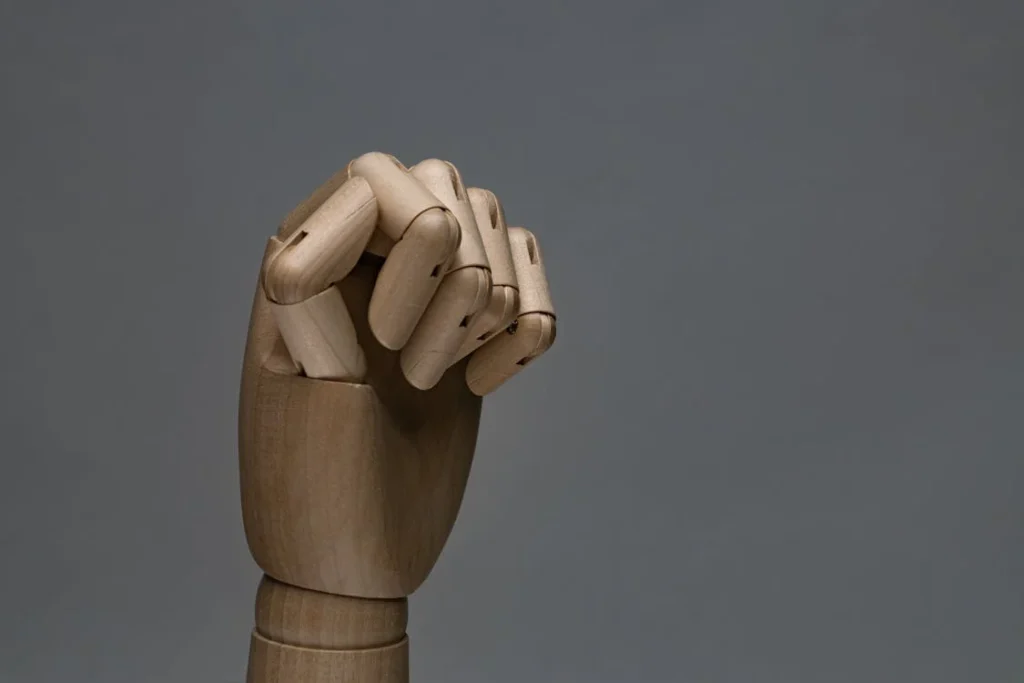
Biofeedback and Technology: Tapping Into the Brain’s Healing Language
The Brain Craves Feedback—and Now It Can Get It Instantly
For centuries, healing relied on guesswork and repetition. A person would attempt a task—stand, grasp, walk—and then wait for someone to say whether it was right or wrong. But the brain doesn’t always learn best from waiting. It thrives on instant feedback. The moment something feels right or wrong, the brain begins to build a pattern. That’s how new skills stick—and how old pain responses can be replaced.
This is where modern technology becomes a powerful partner in recovery.
With today’s advancements in prosthetic design, sensors, and wearable tech, users can now receive real-time data about their movements, posture, pressure, and even neural signals. This biofeedback transforms therapy into a highly personalized and rewarding process. Instead of guessing if they’re doing it right, users can see and feel their progress as it happens.
At Robobionics, we’ve integrated these ideas deeply into how our prosthetics work. Our bionic limbs don’t just respond—they also communicate. Through subtle vibrations, resistance changes, or visual cues on connected apps, users know immediately when they’ve achieved the right grip force, alignment, or motion path. That immediate recognition triggers the brain’s reward system in a way that words alone can’t match.
It’s not about replacing human encouragement. It’s about enhancing it—making feedback faster, clearer, and more deeply felt.
From Passive Wear to Active Learning: The Power of Smart Prosthetics
Traditional prosthetics were designed mainly for function. They were passive tools that responded mechanically to muscle input. But smart prosthetics have changed the game. They are interactive systems that learn and adapt with the user. And in doing so, they turn each use into a kind of learning loop.
Imagine a user trying to pick up a delicate object like a teacup. With older limbs, they might crush it or drop it. With a smart limb, sensors detect the tension and adjust the grip dynamically. And if the user succeeds, they receive immediate haptic feedback—a gentle buzz or pressure that says, “You did it right.” That moment doesn’t just prevent error. It creates emotional validation. The brain records it as a win.
These micro-rewards—tiny cues from the device itself—build motivation without anyone saying a word. They allow recovery to happen even when the user is alone. That independence itself becomes another source of reward.
Gamification: Healing Through Play, Not Pressure
One of the most exciting developments in recent years has been the use of gamification in rehabilitation. This doesn’t mean turning therapy into a childish game. It means using game-like elements—scores, progress bars, challenges, levels—to give the brain a sense of forward motion.
People love a good challenge. The human brain lights up when it knows there’s a goal to chase or a level to beat. So why not use that drive for recovery?
Apps connected to smart prosthetics can now track movement accuracy, grip speed, reaction time, and even endurance. And they display that data in fun, engaging ways—like completing a path, reaching a milestone, or collecting virtual trophies.
This isn’t superficial. It’s science. Gamification taps into the dopaminergic pathways of the brain, keeping users engaged in tasks that might otherwise feel boring, repetitive, or painful.
At Robobionics, we’ve explored custom app integrations that let users track their usage stats over time. They can see how many steps they’ve taken, how many successful grips they’ve achieved, or how their motion control has improved. This data doesn’t just guide therapy—it celebrates it. It turns invisible effort into something visible and sharable.
Personalized Feedback for Every User
No two bodies are the same. And no two recovery journeys should be either. That’s why one of the most promising uses of technology in reward-based healing is personalized feedback systems. These are AI-driven or machine learning models that analyze a user’s performance and suggest specific ways to improve.
For example, a prosthetic arm may track how often a user uses full range of motion during the day. If it drops below a certain threshold, the system might gently remind them with a notification—or better yet, celebrate the day they beat their own record.
This kind of nonverbal reinforcement becomes incredibly powerful over time. It’s not just about metrics. It’s about shaping behavior through micro-rewards that keep the brain curious, committed, and emotionally invested.
And when users start to see their own stats climbing—when they realize, “I’ve improved by 20% this month”—the emotional high they feel is not imagined. It’s chemical, neurological, and motivational all at once.
The Future: Neurofeedback and Mind-Controlled Devices
While it may sound futuristic, mind-controlled prosthetics are already a reality. These devices use EMG (electromyography) or even EEG (electroencephalography) signals to translate brain or muscle activity into movement. The user simply thinks about moving, and the limb responds.
But even more exciting is the role of neurofeedback—systems that monitor brain activity and reward optimal patterns. Imagine a headset that tracks when your brain is focused, relaxed, or engaged—and sends visual or auditory signals to guide you into the ideal healing state.
This kind of direct brain training could revolutionize how we think about recovery. It could help users move past fear, train attention, reduce stress, and build more productive habits—not just for prosthetic use, but for emotional resilience in everyday life.
While these technologies are still emerging, we at Robobionics are already exploring how they might be integrated into future designs. Because healing shouldn’t just be hard work—it should be something the brain actively wants to do.
Conclusion
Healing is no longer just about fixing what’s broken—it’s about activating what’s possible. Reward-based healing proves that progress isn’t just physical; it’s emotional, neurological, and deeply human. When we align pain with purpose and effort with encouragement, we give the brain what it craves: a reason to keep going.
At Robobionics, we’ve seen how this shift—from passive recovery to active, reward-driven growth—can transform lives. Whether through small wins, emotional support, or cutting-edge technology, the path forward becomes not just bearable, but meaningful.
Recovery is not a straight line. But with the right mindset, support, and feedback, every step—no matter how small—feels like a step toward strength.
You’re not just healing a limb.
You’re building a life.
And that deserves to be celebrated, every single day.



